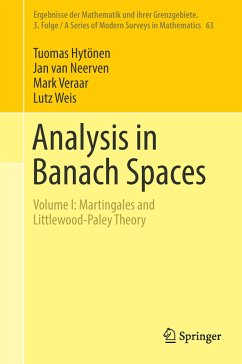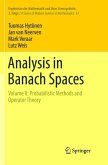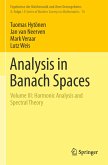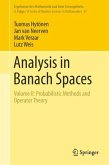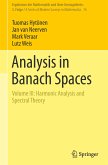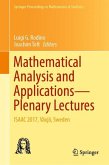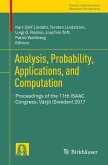The present volume develops the theory of integration in Banach spaces, martingales and UMD spaces, and culminates in a treatment of the Hilbert transform, Littlewood-Paley theory and the vector-valued Mihlin multiplier theorem.
Over the past fifteen years, motivated by regularity problems in evolution equations, there has been tremendous progress in the analysis of Banach space-valued functions and processes.
The contents of this extensive and powerful toolbox have been mostly scattered around in research papers and lecture notes. Collecting this diverse body of material into a unified and accessible presentation fills a gap in the existing literature. The principal audience that we have in mind consists of researchers who need and use Analysis in Banach Spaces as a tool for studying problems in partial differential equations, harmonic analysis, and stochastic analysis. Self-contained and offering complete proofs, this work is accessible to graduate students and researchers with a background in functional analysis or related areas.
Over the past fifteen years, motivated by regularity problems in evolution equations, there has been tremendous progress in the analysis of Banach space-valued functions and processes.
The contents of this extensive and powerful toolbox have been mostly scattered around in research papers and lecture notes. Collecting this diverse body of material into a unified and accessible presentation fills a gap in the existing literature. The principal audience that we have in mind consists of researchers who need and use Analysis in Banach Spaces as a tool for studying problems in partial differential equations, harmonic analysis, and stochastic analysis. Self-contained and offering complete proofs, this work is accessible to graduate students and researchers with a background in functional analysis or related areas.
"The book can be used not only as a reference book but also as a basis for advanced courses in vector-valued analysis and geometry of Banach spaces. This monograph can be studied for different motivations, it clearly goes straight to the core and introduces only those concepts that will be needed later on, but makes detailed proofs, so it can be used as a textbook for students or as a book for researchers ... ." (Oscar Blasco, zbMATH, Vol. 1366.46001, 2017)
The authors thus select a representative set of topics, and present each of them in the thorough and highly readable style . Anyone primarily trained in functional analysis is extremely likely to enjoy the Analysis in Banach spaces series. For these readers, the series provides a highly readable and completely self-contained entry point into many other Fields, especially harmonic and stochastic analysis. (Pierre Portal, Mathematical Reviews, January, 2025)
The authors always cover the necessary prerequisites from earlier developments and the book is meant to be self-contained. ... The volume ends with an interesting list of open problems and an appendix containing a section on measurable semigroups and another one on the trace method for real interpolation. (Oscar Blasco, zbMATH 1534.46003, 2024)
The authors always cover the necessary prerequisites from earlier developments and the book is meant to be self-contained. ... The volume ends with an interesting list of open problems and an appendix containing a section on measurable semigroups and another one on the trace method for real interpolation. (Oscar Blasco, zbMATH 1534.46003, 2024)

